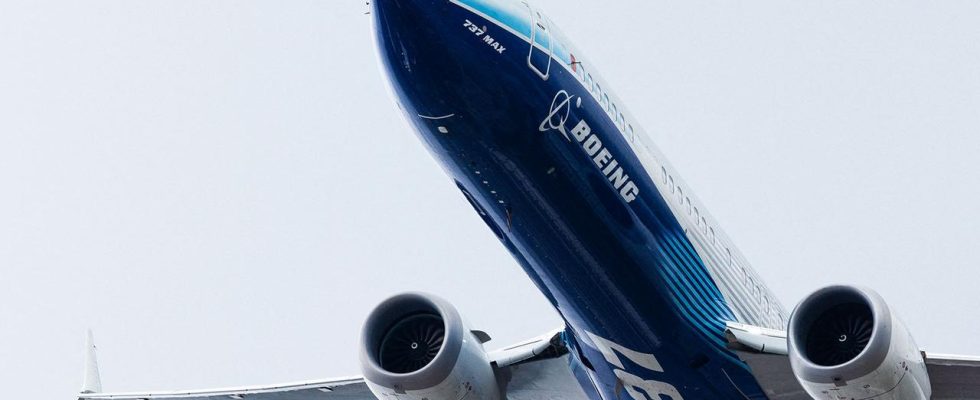The accident involving a Boeing 737 Max in Texas was apparently caused by technical problems with the brakes. This is shown by investigations by the US authorities. The manufacturer has to pay compensation because of the jets being shut down.
After another incident involving a Boeing 737 Max aircraft about a month ago, the US traffic authority National Transportation Safety Board (NTSB) has now submitted a preliminary report. Accordingly, the pilot stated that the brakes appeared to be less effective than usual and that the aircraft and the brake pedals were shaking violently shortly before the United Airlines plane skidded off the runway.
On March 8th, the US company United Airlines’ plane drove off a runway onto a grassy area at the airport in Houston (state of Texas). There it crashed into a concrete building at 40 kilometers per hour and was badly damaged – the left main landing gear broke off. The preliminary report did not name a cause for the accident, which did not result in anyone being injured. The NTSB often takes a year or more to reach conclusions about accidents.
Boeing will pay $160 million for decommissioning
Boeing aircraft have been involved in repeated incidents in recent months. In mid-March, the New York Times reported on dozens of production problems with the Boeing 737 MAX. During extensive safety tests carried out by the US Federal Aviation Administration (FAA) on the machine, the company failed more than a third of the tests. Most recently, a Boeing Type 737-800 lost a fuselage part on a flight from San Francisco to the US state of Oregon.
In January there was a near-accident with a Boeing 737 Max 9 belonging to Alaska Airlines. Shortly after takeoff, a fuselage fragment broke out during the climb. The more than 170 people on board largely escaped horror. However, it was only by a stroke of luck that the two seats near the hole in the fuselage remained empty and the aircraft was still at a relatively low altitude.
The weeks-long shutdown of Boeing aircraft of this type is causing high costs for the aircraft manufacturer. Boeing paid Alaska Airlines around $160 million in the last quarter as compensation for lost revenue and additional expenses. Further compensation is expected, but details are confidential, Alaska Airlines said in a statement today.
Four bolts were missing
According to initial investigations, the accident investigation authority NTSB assumes that four fastening bolts were missing from the fuselage part. There are indications that the fragment continued to slide up until it broke out on the machine’s 154th flight, said NTSB chief Jennifer Homendy in a hearing in the US Senate. It is known that the fuselage fragment was removed for work at the Boeing factory and then reinserted.
However, the aircraft manufacturer has so far been unable to find any documents about this and make them available to the investigators, as it recently became known. Boeing is under increased pressure to improve quality controls following the incident. The death of John Barnett attracted even more attention. According to police, the 62-year-old former Boeing manager probably committed suicide. He had repeatedly publicly criticized his old employer – because of alleged security deficiencies.
As a consequence of the affair, the company is replacing several employees in responsible positions: CEO Dave Calhoun will be giving up the position at the end of the year, the aircraft manufacturer announced at the end of March. Chairman of the Board of Directors Larry Kellner and the head of the commercial aircraft division, Stan Deal, will also be leaving.
Manufacturers are considering splitting up their suppliers
Meanwhile, Boeing may soon be able to report success in splitting up supplier Spirit AeroSystems. According to insiders, Airbus and the group are nearing an agreement. The world’s two largest planemakers are exploring how to unbundle their respective ties to Spirit, several people familiar with the matter told Reuters. Previously, Boeing intended to buy back Spirit completely and then examine how the plants required by Airbus could be sold to the rival.
Boeing had outsourced parts of its manufacturing for two decades. Today’s Spirit company was spun off from Boeing in 2005 and shortly afterwards acquired Airbus as its second largest customer behind Boeing. The Europeans deliver roughly a fifth of sales, while Boeing has around 70 percent of the components for the best-selling 737 manufactured by Spirit. In order for the Americans to regain greater control over their supply chain, the Europeans’ manufacturing processes must be outsourced.

